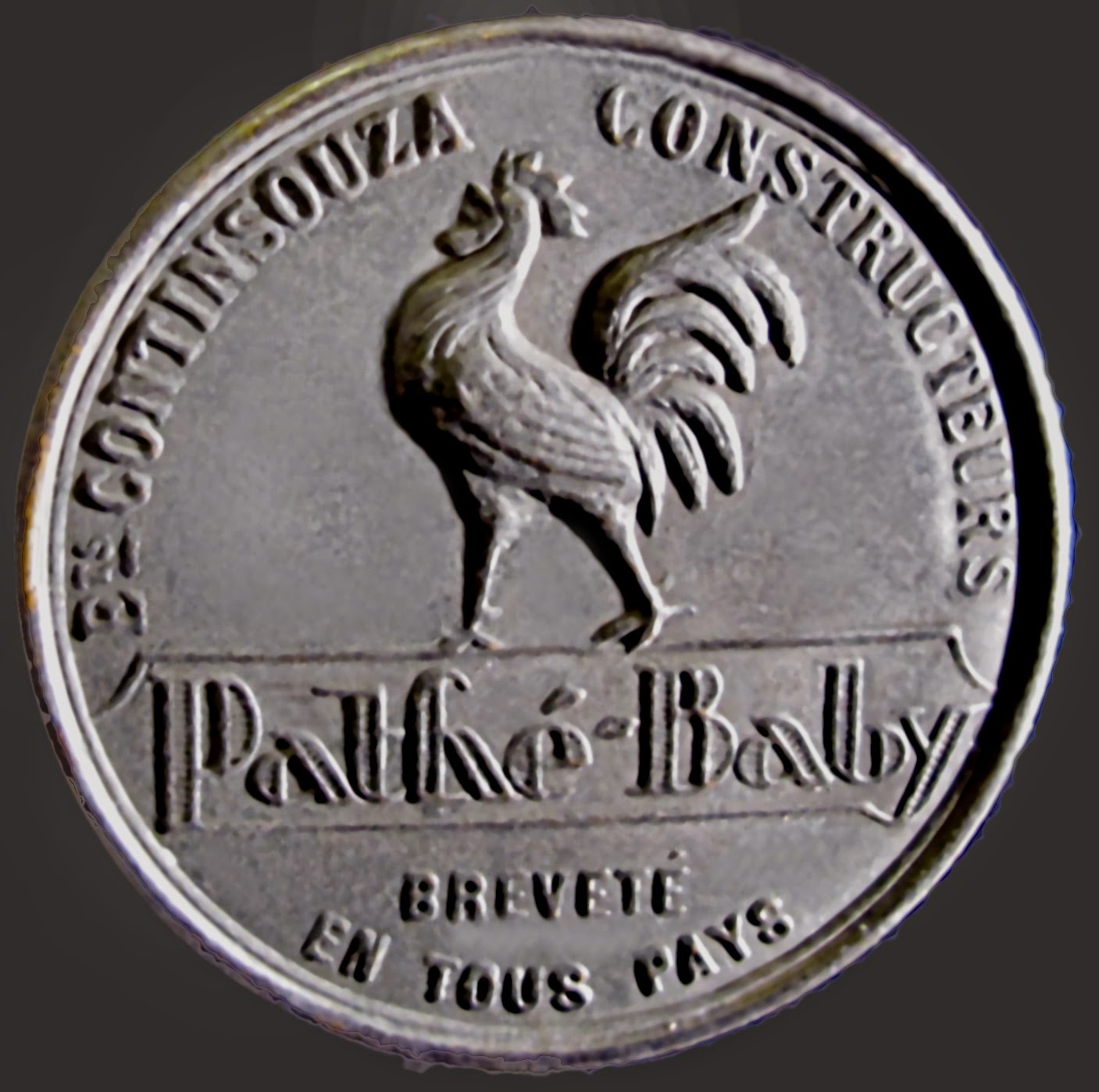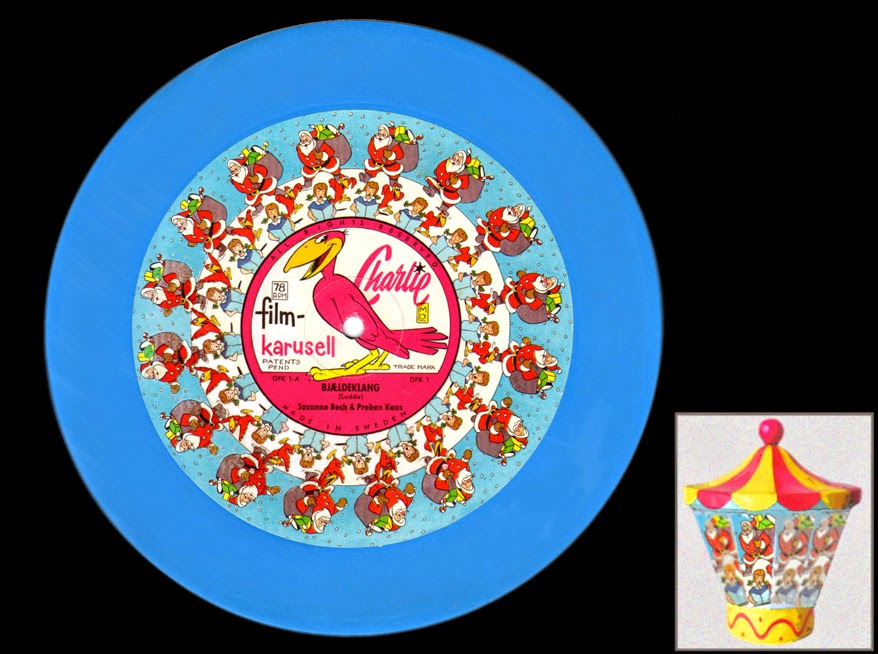SOME OLD GRAMOPHONE RECORDS
78'S BEFORE THE 1920'S
Common gramophone records from 1900 to 1950
were playing at a speed of 78 rpm (revolutions per minute).
They were made of a black shellac resin and had a diameter of 25 or 30 cm.
were playing at a speed of 78 rpm (revolutions per minute).
They were made of a black shellac resin and had a diameter of 25 or 30 cm.
Two sided records became the norm after 1910.
Some years ago however I found a few antique single sided records.
Engraved on their reverse side was no music, but a picture:
The Gramophone Co trademark.
The "Recording Angel" was registered trade mark in 1899.

The inventor E. Berliner in USA however asked his contractor VICTOR the supplier of clock-work machines and recordings to introduce the picture "His Masters Voice" on their records. That was a few years earlier than HMV became the final and greatest trade mark in Europe.
Common popular music was often delivered in simple flimsy paper covers with no information but the sales company or store.
The shellac material was furthermore very easily torn to pieces if not handled with care.
Some said that the labels in those days looked like tombstones with their golden letters on a black background. But among all the companies that were established before the 1920's, many labels were decorated with colourful pictures.
With a few exceptions the sound was not that colourful. The "microphone" still was just a horn connected to the engraving machine. The range of sound frequency was limited. Recording studios however made a lot of inventions to enhance the sound quality.
Self portrait of Enrico Caruso in the recording studio.

The acoustic gramophone of the time soon developed to an instrument of precision.
When records were handled with greatest care and the stylus had a correct tip diameter and angle, the music started to be taken seriously.
Music lovers among upper-class people could afford the latest model. They were familiar to opera and the most celebrated tenor in the world:
ENRICO CARUSO THE FIRST GRAMOPHONE STAR.
Apart from being an opera singer, he was a very intelligent man.
He knew exactly how to make the best of the early recording technology.
His mix of barytone and tenor sound did fit the narrow frequency range perfectly.
The fact that he was an excellent caricaturist shows a great deal of humour too. As the superstar at Metropolitan Opera house for 18 seasons, he loved USA. Born in Naples 1873 he died in New Jersey 1920.
The branch of recordings was multinational. So matrixes made in USA were distributed to affiliated companies. This one was recorded in 1914 by Victor but pressed in Germany.
Oddly enough it is single-sided. Maybe it was the last shipment due to the beginning off WWI. During the war in 1917 Caruso recorded the soldier's song "Over there" and helped selling war bonds in USA. That might not have been popular in Germany then.
I found this strange record many years ago at a car boot sale in Copenhagen.
Maybe it had something to do with the First World War too.
Written in Danish it says "His Enemies Voice"
The message is clear enough. But I still think, that the picture was clever and very funny.
These antique gramophone records have no value any more. The music has now been taken care of by institutions, restored to digital enjoyable files. A lot of them are available on the net for free.























































